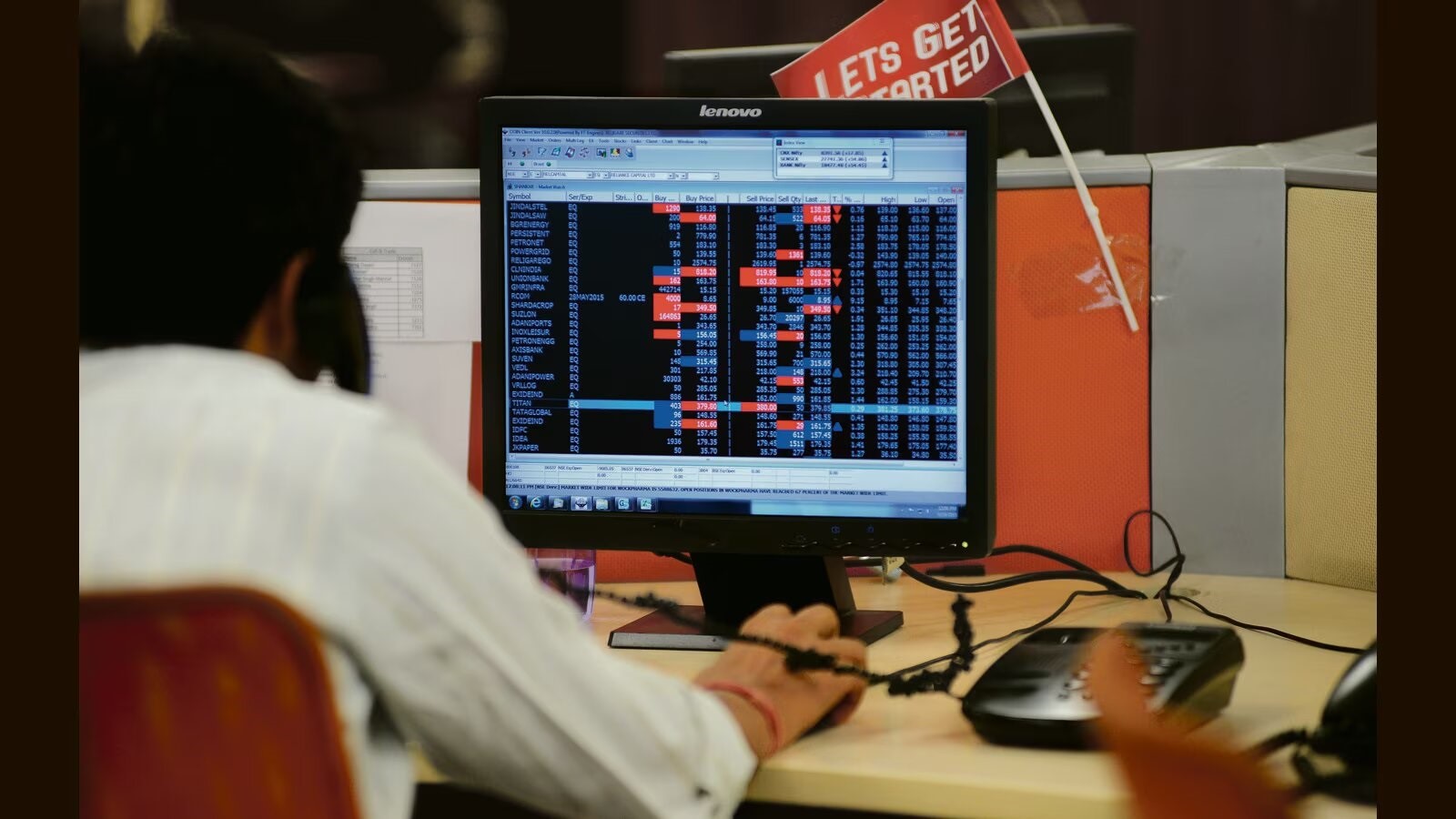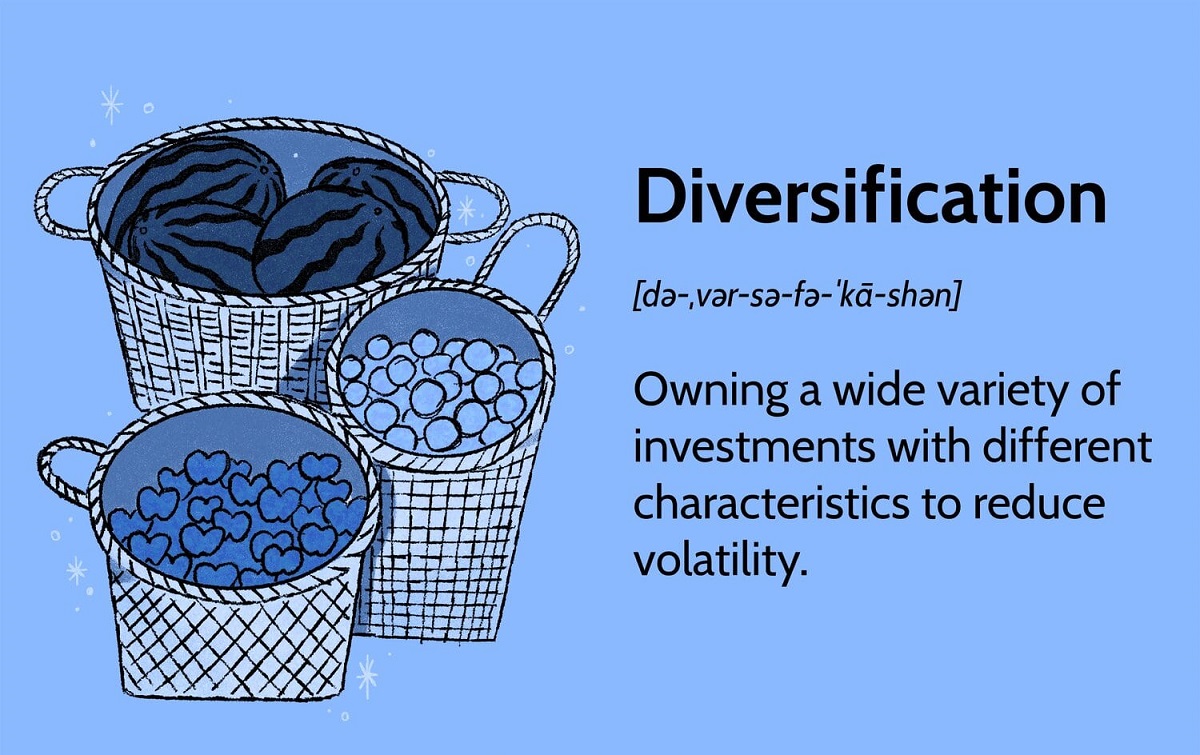Introduction
Futures and options are popular investment instruments in the financial markets. They offer the potential for significant returns, but they also come with inherent risks. Understanding these risks is crucial for investors who are considering venturing into futures and options trading.
In this article, we will delve into the risks associated with futures and options investments. By being aware of these risks, investors can make more informed decisions and manage their investment portfolios effectively.
Before we explore the risks, let’s first understand what futures and options are. Futures contracts are agreements between two parties to buy or sell an asset at a predetermined price on a specified date in the future. Options, on the other hand, give the holder the right, but not the obligation, to buy or sell an asset at a predetermined price within a specific time frame.
The allure of futures and options lies in their leverage factor, which allows investors to control a large amount of underlying assets with a relatively small initial investment. However, this leverage comes with its own risks, as we will discuss in more detail.
It’s important to note that the risks associated with futures and options are higher compared to traditional investments such as stocks and bonds. This is primarily due to the complex and specialized nature of these instruments.
Throughout this article, we will explore various risks associated with futures and options, including market risk, potential for loss, lack of liquidity, time decay, counterparty risk, and more. By understanding these risks, investors can make informed decisions and implement risk management strategies to protect their investments.
What are futures and options?
Futures and options are derivative financial instruments that allow investors to speculate on the price movements of underlying assets without actually owning them. These instruments are widely used in financial markets to hedge risk, speculate on future price movements, and take advantage of market opportunities.
Futures contracts are agreements between two parties to buy or sell an asset at a preset price on a specified future date. The underlying assets can range from commodities like oil and gold to financial instruments like stocks and currencies. Futures contracts are standardized, ensuring that the terms and conditions are uniform for all participants. The buyer of a futures contract has an obligation to purchase the asset, while the seller has an obligation to sell it.
Options, on the other hand, provide the holder with the right, but not the obligation, to buy or sell an asset at a predetermined price within a specific time period. Unlike futures contracts, options give investors the flexibility to choose whether or not to exercise their rights. Call options allow the holder to buy the underlying asset, while put options allow the holder to sell it. Options are useful for investors who want to protect against potential losses or speculate on the price movements of an underlying asset.
Both futures and options come with the concept of leverage. Leverage allows investors to control a large position in the underlying asset with a smaller amount of capital. For example, if a futures contract has a leverage ratio of 10:1, an investor only needs to deposit 10% of the contract value as margin. This amplifies both potential profits and losses. While leverage can lead to substantial gains, it also exposes traders to significant risks.
One of the key differences between futures and options is the obligation to transact. Futures contract holders are obligated to buy or sell the asset at the predetermined price and date, whereas options contract holders have the choice to exercise their rights. This distinction is important as it affects the risk exposure and strategies used by investors in these markets.
In the next sections, we will explore the risks associated with futures and options investments, providing insights into leverage, market risk, potential for loss, margin requirements, lack of liquidity, time decay, complexity in pricing models, counterparty risk, lack of control over the underlying asset, and regulatory risks.
The Concept of Leverage
One of the key characteristics of futures and options is the concept of leverage. Leverage allows investors to control a larger position in the underlying asset with a smaller amount of capital. This amplifies the potential returns but also increases the risk exposure.
When trading futures, investors are required to put up a deposit called margin, which is a small percentage of the total contract value. This margin serves as collateral to cover any potential losses. The leverage ratio determines the amount of control the investor has over the underlying asset. For example, if the leverage ratio is 10:1, an investor only needs to deposit 10% of the contract value as margin.
Leverage can be a double-edged sword. On one hand, it allows investors to achieve higher returns on their investments. For instance, if the price of the underlying asset moves in their favor, the returns generated from the leveraged position can be significantly higher compared to the initial investment.
On the other hand, leverage can lead to significant losses if the price moves in the opposite direction. A small price movement against the investor’s position can result in substantial losses, exceeding the initial investment. The higher the leverage, the more amplified the potential losses.
It is crucial for investors to understand the risks associated with leverage and manage their positions accordingly. Proper risk management techniques such as setting stop-loss orders and implementing disciplined trading strategies can help mitigate the potential downsides of leverage.
Moreover, it is important to note that leverage magnifies not only potential gains and losses but also transaction costs. Transaction costs, including brokerage fees and commissions, can have a significant impact on the overall returns of leveraged positions.
While leverage can be enticing for investors seeking higher returns, it is essential to approach it cautiously and with a clear understanding of the associated risks. Investors should carefully assess their risk tolerance and ensure that they have sufficient knowledge and experience before engaging in leveraged trading.
Now that we have explored the concept of leverage, let’s delve into the specific risks associated with futures and options investments, including market risk, potential for loss, margin requirements, lack of liquidity, time decay, complexity in pricing models, counterparty risk, lack of control over the underlying asset, and regulatory risks.
Volatility and Market Risk
Volatility is a crucial factor in futures and options trading. It refers to the degree of price fluctuations in the underlying asset. High volatility can provide opportunities for significant gains, but it also increases the level of market risk.
When the market experiences high volatility, the prices of futures and options can fluctuate rapidly and unpredictably. This volatility can be triggered by various factors such as economic events, geopolitical tensions, regulatory changes, or even market sentiment. As a result, investors face the risk of substantial losses if they misjudge the direction or magnitude of price movements.
Market risk is the risk of adverse price movements in the underlying asset. This risk is particularly significant in futures and options trading due to the leverage involved. The amplified exposure to market fluctuations means that even small price movements can result in significant gains or losses.
It is crucial for investors to have a comprehensive understanding of the factors that impact market volatility and to constantly monitor market conditions. Techniques such as technical analysis and fundamental analysis can help investors make informed decisions and identify potential trading opportunities.
To manage market risk effectively, investors can utilize risk management strategies such as setting stop-loss orders. Stop-loss orders automatically trigger the sale of a position if the price reaches a predetermined level. This helps to limit potential losses and protect capital in volatile markets.
It is important to note that while volatility presents opportunities for profit, it also carries inherent risks. Investors must be prepared for both upside and downside movements and have a solid risk management plan in place.
In the next sections, we will delve deeper into the potential for loss, margin requirements, lack of liquidity, time decay, complexity in pricing models, counterparty risk, lack of control over the underlying asset, and regulatory risks associated with futures and options investments.
Potential for Loss
One of the key risks associated with futures and options investments is the potential for significant losses. Due to the leverage involved, even small price movements can result in substantial losses for investors.
In futures trading, investors are required to put up a margin, which is a small percentage of the total contract value. The leverage allows investors to control a larger position in the underlying asset. While this amplifies the potential returns, it also magnifies the potential losses.
If the market moves against the investor’s position, losses can accumulate quickly. In some cases, the losses can exceed the initial investment. This is known as a margin call, which occurs when the investor’s margin balance falls below the required maintenance margin level. In such situations, investors may be required to deposit additional funds to cover the losses or face the liquidation of their positions.
Similarly, options trading entails the risk of losing the entire premium paid for the options contract if the underlying asset does not move in the anticipated direction. Unlike futures contracts, options give investors the right, but not the obligation, to buy or sell the asset. If the options expire out-of-the-money, meaning the strike price is not reached during the specified time period, the investor may lose the entire premium paid for the options.
To manage the potential for loss, it is crucial for investors to set clear risk management strategies. This includes setting stop-loss orders to limit potential losses and determining the maximum amount of capital that can be risked on each trade. Diversifying the investment portfolio and avoiding overexposure to a single asset or market can also help mitigate the potential losses.
Additionally, it is important for investors to educate themselves about the mechanics of futures and options trading. Understanding the risks involved and the impact of leverage can help investors make more informed decisions and manage their positions responsibly.
In the upcoming sections, we will explore other risks associated with futures and options investments, including margin requirements, lack of liquidity, time decay, complexity in pricing models, counterparty risk, lack of control over the underlying asset, and regulatory risks.
Understanding Margin Requirements
Margin requirements play a crucial role in futures and options trading. They determine the amount of initial capital that investors need to deposit when opening a position. Understanding margin requirements is essential for managing risk and maintaining trading positions.
In futures trading, margin refers to the amount of money that traders are required to deposit with their brokers as collateral. It is a percentage of the total contract value and serves as a form of security against potential losses. The margin requirements vary depending on the type of futures contract and the brokerage firm.
Margin requirements in options trading are slightly different. When purchasing options contracts, investors need to pay the premium upfront, which is the cost of the options contract. This premium serves as the maximum potential loss for the investor, as they have the right, but not the obligation, to exercise the options.
Margin requirements provide a way for brokerage firms to regulate and manage the risk associated with futures and options trading. By placing a margin on positions, brokers ensure that investors have enough capital to cover potential losses and protect against default risks.
It is important to note that margin requirements are not static and can change based on various factors such as market volatility, contract specifications, and regulatory requirements. Brokers may impose higher margin requirements during periods of high market volatility or for certain types of assets that are considered riskier.
Investors should be aware of the impact of margin requirements on their positions. If the market moves against the investor’s position, losses may deplete the margin balance. If the margin balance falls below the required maintenance level, a margin call may be triggered, leading to potential liquidation of positions.
It is crucial for investors to have a clear understanding of the margin requirements set by their brokers and to manage their positions accordingly. This includes setting aside sufficient capital to meet margin calls, keeping a close eye on the margin balance, and considering the impact of margin on overall risk and account stability.
In the upcoming sections, we will explore other risks associated with futures and options investments, including lack of liquidity, time decay, complexity in pricing models, counterparty risk, lack of control over the underlying asset, and regulatory risks.
Lack of Liquidity
Liquidity is a crucial aspect of any financial market, including futures and options markets. It refers to the ease with which traders can buy or sell assets at stable prices without causing significant price fluctuations. However, futures and options markets may suffer from a lack of liquidity, which poses risks for investors.
When there is low liquidity in the market, it can be challenging to find counterparties to execute trades at desired prices. This can result in wider bid-ask spreads, making it more costly for investors to enter or exit positions. Additionally, low liquidity can lead to situations where large orders have a significant impact on the market, causing prices to move unfavorably for the trader.
The lack of liquidity in futures and options markets is most prominent in less popular or niche contracts. These contracts may have lower trading volumes and fewer participants compared to more liquid contracts, making it difficult to execute trades without causing significant price slippage.
Investors need to be mindful of the potential risks associated with low liquidity. It may become challenging to close out positions or adjust strategies quickly when market conditions change. This lack of flexibility can expose traders to increased risks, particularly during volatile market periods.
Moreover, the lack of liquidity can have a significant impact on options trading due to the unique characteristics of options contracts. Options prices are derived from the underlying asset’s price, but they also depend on factors such as volatility, time to expiration, and interest rates. When liquidity is low, it can result in wider bid-ask spreads for options, reducing the efficiency of price discovery and potentially increasing trading costs.
To mitigate the risks associated with the lack of liquidity, investors can employ several strategies. They can focus on trading more liquid contracts that have higher trading volumes and a larger number of market participants. Moreover, maintaining sufficient capital and setting realistic expectations regarding order execution can help navigate potential challenges related to liquidity.
In the upcoming sections, we will explore other risks associated with futures and options investments, including time decay, complexity in pricing models, counterparty risk, lack of control over the underlying asset, and regulatory risks.
Time Decay in Options
Time decay, also known as theta decay, is a significant factor to consider when trading options. It refers to the gradual reduction in the value of an options contract as time passes. This phenomenon occurs because options have an expiration date, and as time elapses, the chances of the options being profitable decrease.
Options contracts have a limited lifespan, and their value is based not only on the underlying asset’s price but also on factors such as volatility and time to expiration. As the expiration date approaches, the time value of the options decreases, resulting in a decline in its overall value.
This time decay affects primarily the extrinsic value of the options, which encompasses factors other than the intrinsic value (the difference between the strike price and the underlying asset’s price). The extrinsic value includes elements such as time value and implied volatility.
Option traders need to be aware of time decay and its impact on options pricing. As time passes, the rate of decay tends to accelerate, particularly in the final weeks leading up to expiration. This can lead to a rapid reduction in the options’ value, even if the underlying asset’s price remains unchanged.
Furthermore, time decay can be an advantage for options sellers or writers, who profit from the decline in value as they collect premiums. Sellers take advantage of the diminishing time value and can benefit from time decay if the options expire worthless or decrease in value before expiration.
On the other hand, buyers of options face the challenge of overcoming time decay to make profitable trades. They need the underlying asset’s price to move favorably and outweigh the erosion in the options’ value due to time decay. It is crucial for these buyers to have a clear understanding of the expiration period and consider the time decay factor when evaluating potential trades.
Traders can manage the impact of time decay by implementing various strategies such as option spreads or strategies that involve shorter expiration periods. These strategies aim to offset the effects of time decay and give traders a higher probability of profiting from the options trade.
In summary, time decay is an essential aspect to consider when trading options. It represents the gradual reduction in the value of options due to the passing of time. Traders should be mindful of this decay and factor it into their options trading strategies to maximize their chances of success.
In the upcoming sections, we will explore other risks associated with futures and options investments, including the complexity of options pricing models, counterparty risk, lack of control over the underlying asset, and regulatory risks.
The Complexity of Options Pricing Models
Options pricing models are essential tools used to determine the fair value of options contracts. However, these models can be complex and require a thorough understanding to accurately price options. The complexity arises from various factors that influence options pricing.
Options pricing models, such as the Black-Scholes or Binomial models, take into account several key variables, including the underlying asset’s price, time to expiration, strike price, risk-free interest rate, and implied volatility. Each of these factors contributes to the options’ value, making the pricing process intricate.
Implied volatility, in particular, is a crucial component in options pricing models. It reflects the market’s expectations of the underlying asset’s future price fluctuations. Higher levels of implied volatility increase options prices, while lower levels decrease prices. Estimating implied volatility accurately can be challenging, as it relies on factors such as historical price movements and market sentiment.
The complexity of options pricing models can present challenges for both traders and investors. Traders need to understand the various inputs and assumptions used in these models to determine the fair value of options and identify mispriced options for potential trading opportunities.
Moreover, the complexity of options pricing models highlights the need for ongoing education and research. Staying up to date with changes in market conditions, volatility levels, and pricing models can provide traders with a competitive edge and enhance their ability to make sound investment decisions.
While options pricing models can be challenging to grasp fully, there are resources available to help traders navigate this complexity. Online calculators, software programs, and educational materials can provide assistance in understanding and applying options pricing models effectively.
It is important for traders to recognize that options pricing is not solely based on these models. Market supply and demand dynamics, as well as other factors, can also influence options prices. Therefore, it is essential to consider the context of the market and not rely solely on theoretical pricing models.
In summary, the complexity of options pricing models arises from the numerous factors involved in determining the fair value of options. Traders and investors should invest time and effort in understanding these models, staying updated on market conditions, and utilizing available resources to make informed decisions.
In the following sections, we will explore other risks associated with futures and options investments, including counterparty risk, lack of control over the underlying asset, and regulatory risks.
Counterparty Risk
Counterparty risk is a significant concern in futures and options trading. It refers to the risk that the party on the other side of a trade may default on their obligations, leading to financial loss for the other party.
In futures and options contracts, traders enter into agreements with a counterparty, typically a brokerage firm or another trader. These contracts are legally binding, and both parties have specific obligations to fulfill. However, there is always a risk that the counterparty may not honor their commitments.
In futures trading, both the buyer and the seller are exposed to counterparty risk. If the seller fails to deliver the underlying asset or the buyer fails to make payment on the agreed-upon date, it can lead to financial losses and legal complications. This risk is particularly relevant when trading over-the-counter (OTC) futures contracts, which are not exchanged through a centralized clearinghouse.
In options trading, counterparty risk is most prominent for options writers or sellers. When an options contract is exercised by the buyer, the writer is obligated to fulfill their side of the contract. If the writer is unable or unwilling to do so, the buyer may face losses as they cannot exercise their options as planned.
Counterparty risk can be mitigated, to some extent, by trading through reputable and regulated exchanges or brokerage firms. These entities act as intermediaries and provide clearing services to ensure that both parties fulfill their obligations. Clearinghouses act as the counterparty to every trade, reducing the risk of default and providing a level of security for market participants.
It is important for traders to conduct due diligence on their counterparties before engaging in futures and options transactions. Understanding the financial stability and reputation of the counterparty can help assess the level of counterparty risk involved.
Hedging strategies can also be utilized to manage counterparty risk. By taking offsetting positions or using options to protect against potential losses, traders can mitigate their exposure to a specific counterparty.
Overall, counterparty risk is an inherent aspect of futures and options trading. Traders must be aware of this risk and take appropriate measures to mitigate it. Utilizing reputable intermediaries, conducting due diligence on counterparties, and implementing hedging strategies can all contribute to managing counterparty risk effectively.
In the following sections, we will explore other risks associated with futures and options investments, including the lack of control over the underlying asset and regulatory risks.
Lack of Control over the Underlying Asset
One of the risks associated with futures and options trading is the lack of control over the underlying asset. Unlike traditional investments such as stocks, where investors have ownership and control over the underlying company, futures and options contracts only provide the right, but not the obligation, to buy or sell the asset.
When trading futures contracts, investors do not have direct ownership or control over the underlying asset. Instead, they speculate on the future price movements of the asset. This lack of control means that investors cannot influence the operations or decision-making of the underlying asset.
In options trading, the lack of control is even more pronounced. Options contracts provide the right, but not the obligation, to buy or sell the asset at a predetermined price within a specific time frame. However, options traders do not possess any ownership rights or control over the underlying asset, such as voting rights or access to dividends.
This lack of control can be a disadvantage for traders who prefer to have a say in the management and direction of their investments. It means that investors cannot actively influence the performance of the underlying asset or take advantage of potential opportunities beyond the options contract itself.
On the other hand, the lack of control can be advantageous in certain situations. For instance, options contracts allow investors to speculate on the price movements of an asset without having to commit the full capital required for direct ownership. This flexibility provides opportunities for investors to profit from market fluctuations without being burdened with the responsibilities and risks associated with ownership.
It is essential for investors to understand the limitations of their control over the underlying asset when trading futures and options. They should carefully consider their investment goals and risk tolerance to determine if these instruments align with their objectives.
On the positive side, the lack of control highlights the importance of thorough research, analysis, and risk management when engaging in futures and options trading. Traders need to rely on accurate market information, technical analysis, and robust risk mitigation strategies to make informed decisions without having direct control over the underlying asset.
In summary, futures and options trading involves a lack of control over the underlying asset. Investors need to be aware of this limitation and adapt their strategies accordingly. Thorough research, risk management, and market analysis become essential tools in maximizing the potential returns while managing the lack of control over the underlying asset.
In the next section, we will explore regulatory risks associated with futures and options investments.
Regulatory Risks
Regulatory risks are an important consideration in futures and options trading. These risks arise from the rules and regulations imposed by regulatory authorities, which can impact the operation, stability, and profitability of the market.
Regulatory bodies such as the Commodity Futures Trading Commission (CFTC) in the United States or the Financial Conduct Authority (FCA) in the United Kingdom have the responsibility of overseeing and regulating futures and options markets. They establish rules to ensure fair trading practices, market integrity, and investor protection.
Changes in regulations can have a significant impact on the futures and options market. New rules or modifications to existing regulations can affect trading strategies, margin requirements, market access, reporting obligations, and the overall market dynamics. It is essential for traders and investors to closely monitor regulatory developments and adapt their strategies accordingly.
Additionally, regulatory interventions may aim to reduce market risks and protect investors but can also introduce new complexities and challenges. Compliance with regulatory requirements can involve increased operational costs and administrative burdens.
Regulatory risks can also extend beyond individual markets. Changes in international regulations, political developments, or the implementation of global trade agreements can impact cross-border trading and introduce uncertainties.
Investors should consider regulatory risks and how they might impact their trading activities. Adhering to the regulations in place, staying informed about regulatory updates, and seeking proper legal and professional advice are important steps to manage regulatory risks.
Furthermore, regulatory risks are closely tied to investor protection. Traders and investors should exercise caution and conduct due diligence when dealing with unregulated or offshore entities that operate outside the jurisdiction of reputable regulatory bodies. Lack of regulatory oversight may expose investors to fraud, manipulation, or other unethical practices.
It is worth noting that regulatory risks can also present opportunities for traders. Changes in regulations may create new markets, introduce new products, or alter trading conditions, providing a chance for traders to adapt and capitalize on emerging trends.
In summary, regulatory risks are an inherent aspect of futures and options trading. Traders and investors should be aware of the rules and regulations governing the markets they operate in and stay updated on any regulatory changes. Adhering to regulatory requirements and seeking professional guidance can help manage regulatory risks and contribute to a safer and more sustainable trading environment.
Conclusion
Futures and options trading can offer significant opportunities for investors, but it is important to be aware of the risks involved. Throughout this article, we have explored various risks associated with futures and options investments.
We started by understanding what futures and options are and how they differ from traditional investments. We then delved into the concept of leverage, which amplifies both potential gains and losses. Volatility and market risk were discussed, highlighting the importance of being prepared for price fluctuations.
We also examined the potential for loss, which arises from the leverage involved in these instruments. Margin requirements play a crucial role in managing risk, and understanding them is essential for maintaining trading positions responsibly.
The lack of liquidity in futures and options markets can pose challenges when executing trades or adjusting strategies. Time decay in options was explored, emphasizing the importance of managing the impact of time on options pricing.
Counterparty risk poses a threat as it involves the potential for the counterparty to default, leading to financial loss. The lack of control over the underlying asset in futures and options trading means that investors cannot influence the asset directly.
Finally, we discussed regulatory risks, which arise from changes in rules and regulations that govern the futures and options markets.
It is crucial for investors to understand these risks, conduct thorough research, and implement effective risk management strategies. By staying informed, applying prudent decision-making, and seeking expert advice when needed, investors can navigate the futures and options markets with confidence.
While the risks are significant, it is important to remember that futures and options trading can also offer rewards if approached with caution, knowledge, and discipline. Proper risk assessment, continuous education, and careful consideration of market dynamics can help traders and investors protect their capital and increase their chances of success.
Remember, the key to successful futures and options trading lies in a well-rounded understanding of the risks and rewards, ongoing research, diligent risk management, and adapting to the ever-changing market conditions.

























